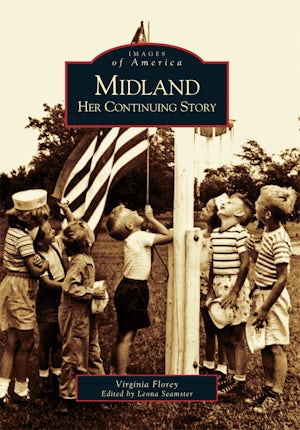
In their previous book, Midland: The Way We Were, Virginia Florey and Leona S... Read More
In their previous book, Midland: The Way We Were, Virginia Florey and Leona S... Read More

In their previous book, Midland: The Way We Were, Virginia Florey and Leona S... Read More
In their previous book, Midland: The Way We Were, Virginia Florey and Leona S... Read More
In their previous book, Midland: The Way We Were, Virginia Florey and Leona Seamster documented the significant people and places that have shaped Midland's rich history. In their second installment, Midland: Her Continuing Story, they have included the history of neighboring towns-Averill, Sanford, Coleman, Hope, and Edenville-that played a significant role in the lumbering era. Through nearly 200 historical photographs and a collection of unprecedented personal stories, Florey and Seamster again explore this fascinating region and focus on its proud heritage as an industrial leader.
In their previous book, Midland: The Way We Were, Virginia Florey and Leona Seamster documented the significant people and places that have shaped Midland's rich history. In their second installment, Midland: Her Continuing Story, they have included the history of neighboring towns-Averill, Sanford, Coleman, Hope, and Edenville-that played a significant role in the lumbering era. Through nearly 200 historical photographs and a collection of unprecedented personal stories, Florey and Seamster again explore this fascinating region and focus on its proud heritage as an industrial leader.